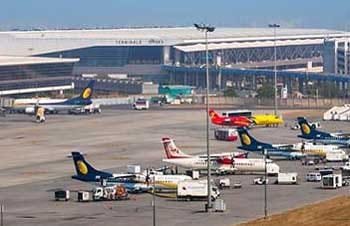India is on the brink of a transportation revolution as the long-anticipated Mumbai-Ahmedabad Bullet Train project gains significant traction. Backed by cutting-edge Japanese technology and robust bilateral cooperation, the Mumbai-Ahmedabad High-Speed Rail (MAHSR) is poised to redefine how we travel between two of India’s most economically significant cities.
High-Speed Connectivity Between Mumbai and Ahmedabad
The Mumbai-Ahmedabad Bullet Train corridor spans 508 kilometers, connecting the bustling metropolis of Mumbai with the industrial powerhouse Ahmedabad. Once operational, this corridor will drastically reduce travel time from 8 hours to approximately 2 hours, offering unprecedented speed, safety, and comfort.
This first-of-its-kind high-speed rail network in India will feature 12 strategically placed stations:
Mumbai
Thane
Virar
Boisar
Vapi
Bilimora
Surat
Bharuch
Vadodara
Anand
Ahmedabad
Sabarmati
These stations will serve not only as travel hubs but also as economic growth centers, spurring real estate development, job creation, and regional connectivity.
Completion Timeline: 2027 for Gujarat Section, 2029 for Full Project
According to the Ministry of Railways, the section of the bullet train project running through Gujarat — between Vapi and Sabarmati — is targeted for completion by December 2027. The remaining stretch, including the complex urban portions within Maharashtra, is expected to be finished by December 2029.
This staggered timeline reflects the engineering and urban planning challenges unique to the Mumbai region, including land acquisition, dense population zones, and infrastructure integration.
Project Funding: Japanese Collaboration at the Core
The Mumbai-Ahmedabad High-Speed Rail project is primarily being developed with financial and technical support from Japan. A Japanese consortium is responsible for approximately 81% of the ₹1.08 lakh crore (~USD 13 billion) project cost. This includes supply of the iconic Shinkansen E5 Series trains, technology transfer, and capacity building.
The remaining project funding is being contributed jointly by:
Ministry of Railways
Government of Gujarat
Government of Maharashtra
As of June 30, 2025, the project has already utilized over ₹78,839 crore, underlining the intensive investment phase currently underway.
Bullet Train Specifications: World-Class Technology on Indian Tracks
The Mumbai-Ahmedabad Bullet Train will operate using the E5 Series Shinkansen technology — renowned for its top speed of 320 km/h, energy efficiency, and impeccable safety record. The infrastructure will include:
Dedicated elevated and underground tracks
Seismic and flood-resistant designs
Automatic train control (ATC) systems
Zero level crossings to ensure high safety
Moreover, this will be India’s first rail line using slab track systems, offering superior stability and lower maintenance.
National High-Speed Rail Corporation Limited (NHSRCL): Leading the Mission
The National High-Speed Rail Corporation Limited (NHSRCL) has been entrusted with the design, construction, and execution of this high-impact project. NHSRCL has made significant progress in areas such as:
Civil works contracts for viaducts and stations
Construction of the Sabarmati terminal hub
Deployment of advanced tunnel boring machines (TBMs)
Initiating track laying in completed corridors
NHSRCL is also preparing a Detailed Project Report (DPR) to expand bullet train services beyond the MAHSR corridor, targeting commercial, economic, and tourism-heavy routes across the country.
All Land Acquired: No More Delays from Land Disputes
The bullet train project faced initial delays due to land acquisition issues, especially in Maharashtra. However, the entire land required — over 1,396 hectares — has now been successfully acquired. This critical milestone enables uninterrupted construction, signaling a clear path forward for both the Gujarat and Maharashtra sections.
Future Expansion Plans: Bullet Train Corridors Across India
India is not stopping with just one high-speed rail line. The Ministry of Railways is actively considering expansion corridors, which include:
Delhi–Varanasi High-Speed Rail
Mumbai–Nagpur High-Speed Rail
Chennai–Mysuru High-Speed Rail
Delhi–Ahmedabad High-Speed Rail
These corridors are being prioritized based on passenger traffic, tourism demand, industrial growth, and regional connectivity needs.
Expected Benefits of the Bullet Train Project
The Mumbai-Ahmedabad Bullet Train is expected to bring transformative changes:
1. Economic Growth & Job Creation
Over 20,000 direct and indirect jobs during construction
Boost to construction, manufacturing, and services sectors
Increased connectivity between major industrial zones
2. Environmental Sustainability
Significantly lower CO2 emissions per passenger kilometer
Electric propulsion reduces dependence on fossil fuels
Sustainable construction practices and green-certified stations
3. Urban Development
Transit-oriented development around stations
Growth in satellite towns and real estate hubs
Better connectivity for tier-2 and tier-3 cities
4. Travel Efficiency
Travel time between Mumbai and Ahmedabad reduced to less than 2.5 hours
Clean, punctual, and safe alternative to road and air travel
Enhanced passenger comfort and safety standards
Japan-India Partnership: A Model of Strategic Infrastructure Development
The bullet train project has further cemented the Japan-India economic and strategic partnership. Japan’s involvement goes beyond funding — it includes:
Skill transfer to Indian engineers and technicians
Technology licensing for indigenous manufacturing
Training programs in Japan for Indian personnel
This model sets the benchmark for future international collaborations in India’s infrastructure domain.
Challenges and Complexities
Despite impressive progress, the project faces several engineering and logistical challenges:
Tunneling beneath the Thane creek using TBMs
Building elevated corridors in dense urban clusters
Synchronizing civil work with electrical and signaling installations
Timely delivery of train sets and imported equipment
However, the Railway Ministry maintains that the most critical milestones have been achieved, and the project is now entering its execution-intensive phase.
Conclusion: India’s Leap into the Future of Rail Travel
The Mumbai-Ahmedabad Bullet Train is no longer just a dream — it’s rapidly becoming a reality. With robust support from the Japanese government, total land acquisition, and steady construction milestones, the first bullet train in India is now well on track.
As we approach December 2027, when the Gujarat section is expected to be operational, and look ahead to December 2029 for full completion, this project represents India’s bold leap into the world of high-speed, next-gen transportation.
It is not just a train — it’s a symbol of progress, a benchmark of Indo-Japanese cooperation, and a new chapter in India’s infrastructure story.
















